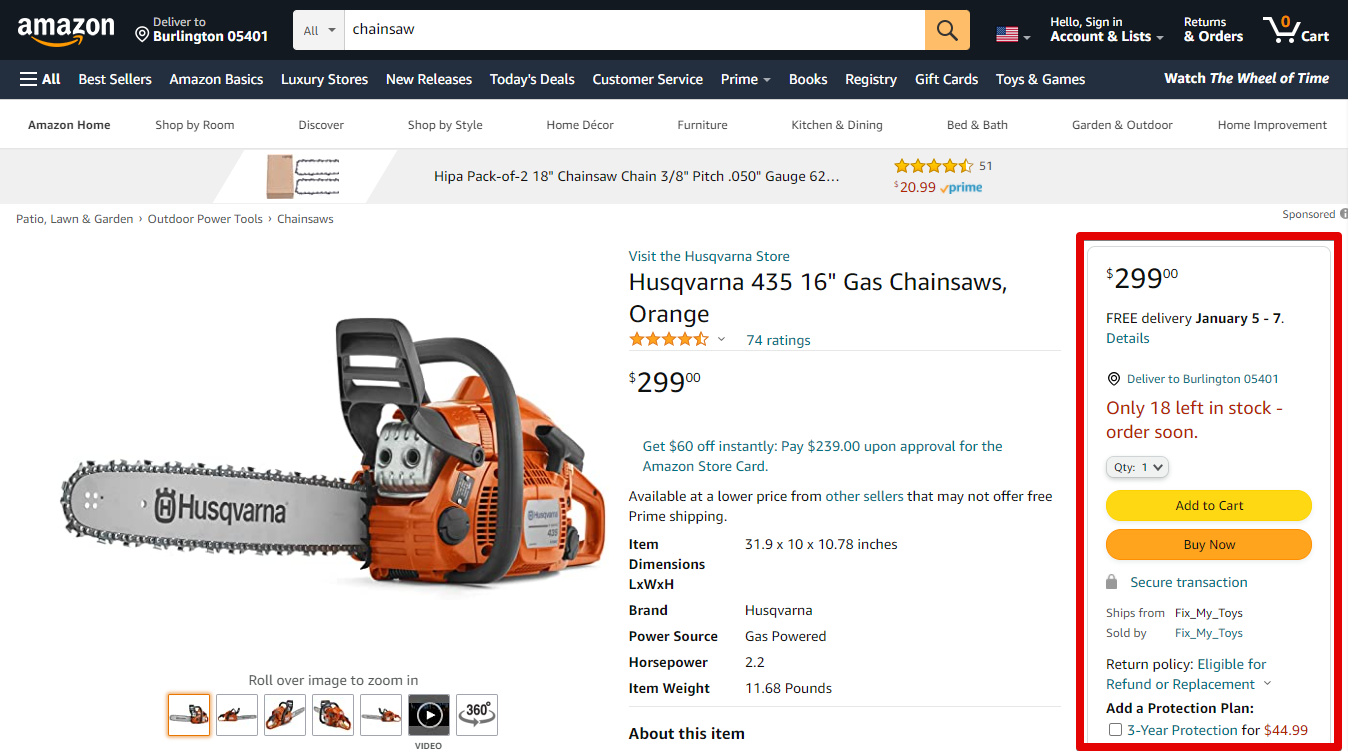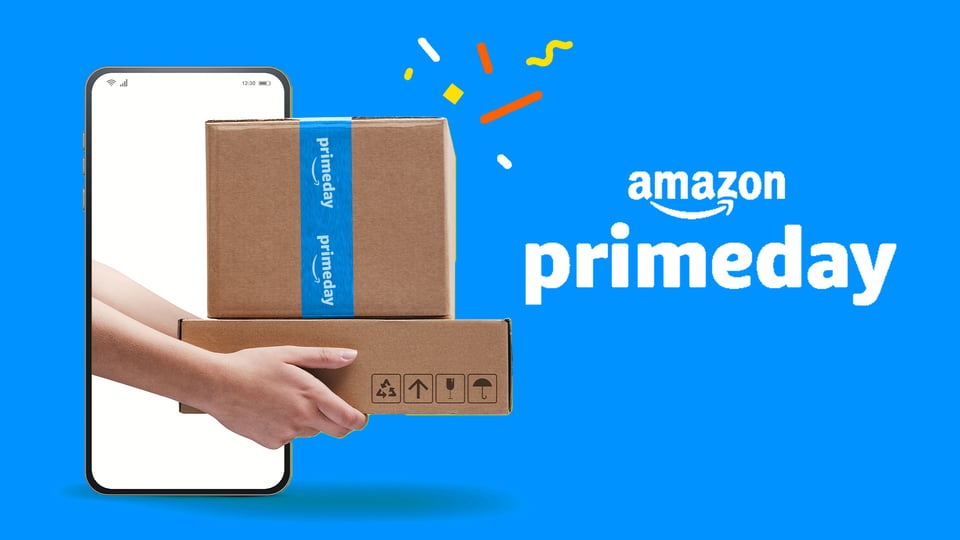Amazon Prime Day has become one of the most important days in the ecommerce calendar, providing unrivaled brand opportunities to skyrocket sales and expand market presence.
We’ve compiled ten highly impactful tactics to help you make the most of the opportunity that Prime Day 2025 offers. But before we dive into those tactics, let’s take a quick look at how Prime Day has evolved into a pivotal event in the world of online retail.
Amazon Prime Day: A retail phenomenon
Prime Day, occasionally called "Black Friday in July," is usually a two-day shopping event for Amazon Prime members. Traditionally a two-day affair, Prime Day has steadily evolved, and in 2025, Amazon announced its most ambitious edition yet: a four-day shopping extravaganza. Marking its 11th year, Prime Day 2025 will span four full days in mid-July, drawing millions of eager shoppers worldwide with deep discounts and limited-time deals across an expansive range of product categories.
Key highlights from Prime Day 2024:
- Record-Breaking Sales: Total sales reached $14.2 billion, marking an 11% increase from 2023.
- Items Sold: Shoppers purchased over 300 million items during the two-day event.
- Average Order Value (AOV): The average order value was approximately $58.
- Multiple Orders: 60% of households placed more than two separate orders, with an average household spend of about $152.
- Top-Selling Categories: Electronics, apparel, and home goods were among the most popular categories.

Big Deals Days (Prime Day early access sale): A second Amazon Prime Day
Following the success of the Prime Early Access Sale in October 2022, Amazon rebranded and expanded the event in 2023 as Prime Big Deal Days. The momentum carried through to 2024, cementing this secondary Prime event as a key date in the ecommerce calendar.
In 2024, Prime Big Deal Days took place on October 8–9 across 19 countries, including the U.S., U.K., France, Germany, and Japan. According to Amazon, more Prime members shopped during the 2024 event than ever before, making it the company's largest October shopping event to date.
While Amazon didn’t release official revenue numbers, early data from third parties gives us a glimpse into its scale. Sellers reported up to a 42% year-over-year increase in sales during the event, according to a breakdown by Digital Commerce 360. In total, Prime members saved more than $1 billion globally on millions of products during the two-day event. Prime Big Deal Days now serve as a strategic kickoff for the holiday season. Brands use the event to test pricing, gauge demand, and streamline inventory strategies ahead of Black Friday and Cyber Week.
In terms of categories, 2024’s top performers included Electronics, General Apparel, and Health & Beauty, all of which saw substantial sales spikes. Consumables like protein powders, skincare products, and household essentials continued to rank among the most purchased SKUs, reinforcing the shift away from Toys, which previously dominated the charts.
As Amazon is expected to repeat Prime Big Deal Days in 2025, brands in Fashion, Home Essentials, Beauty, and Toys, should plan early promotions, adjust advertising budgets, and optimize inventory with this critical October sales moment in mind.
10 tips to set your brand up for Prime Day success
For brands to succeed on Amazon Prime Day 2025, they must plan their marketing strategy meticulously. Many products are thrown at consumers in a short time, and it is essential to stand out from the crowd. In the following ten tips, we’ve suggested some winning tactics that the best Amazon brands utilize to great effect.
1. Build engagement before Prime Day kicks off
Consumers are increasingly heading straight to marketplaces—not search engines—when starting their shopping journey. In fact, according to ChannelEngine’s research, 47% of shoppers begin product discovery on marketplaces, compared to just 24% who start on Google. This marks a pivotal shift in how and where consumers explore products.
That’s why it’s critical not to wait for Prime Day to begin before ramping up visibility. Get your products in front of potential buyers early. Use features like Amazon wishlists and product follows to build intent ahead of time. Make sure your listings are optimized, your ads are live, and your brand presence is consistent, so shoppers are ready to click “Buy Now” the moment the deals go live.
2. Ensure that you leverage positive customer reviews
According to our 2025 shopping behaviour report, reading customer reviews remains the most common way shoppers research products online. While 77% of consumers say reviews influence their purchases, only 33% fully trust them, revealing a growing skepticism as shoppers get closer to buying.
That’s why it’s essential to focus not just on quantity, but on quality and authenticity. Work on gaining those testimonials to get your products front-of-house when Amazon Prime Day 2025 arrives. Many five-star reviews also help your products to win the Buy Box.
3. The Amazon buy box: Your gateway to Prime Day success
The Buy Box is the white box on the right of an Amazon product description page where shoppers can add things to their cart for purchase, and it accounts for over 80% of sales.

To improve your chances:
- Keep prices competitive (including shipping).
- Maintain high seller performance metrics like fast fulfillment, low return rates, and strong customer service.
- Monitor your inventory closely to avoid stockouts.
If you're using Fulfillment by Amazon (FBA), your odds improve even more. But combining FBA with intelligent repricing strategies—like those powered by ChannelEngine—can dramatically improve your chances of staying in the Buy Box for longer, at the right price, and at the right moment.
4. Create irresistible product listings
Your product listing is often the only interaction a customer has with your product before buying—so it has to do the heavy lifting. High-quality visuals, accurate descriptions, and keyword-rich content are non-negotiables during high-traffic events like Prime Day.
And here's why it matters: 22% of online product returns happen because the item “looks different than expected”, often due to misleading or incomplete product content (Statista, 2024). That’s a major source of friction—and easily avoidable.
To improve listing performance:- Use clear, high-resolution images from multiple angles.
- Write concise, benefit-led descriptions that match customer expectations.
- Add relevant keywords to improve search ranking and discoverability.
But meeting Amazon’s guidelines while optimizing for SEO can be tricky, especially if you’re selling across multiple marketplaces.
5. Prime time for inventory clearance & smart bundling
Prime Day is the perfect time to move slow sellers, clear seasonal stock, and free up warehouse space. With millions of shoppers hunting for deals, offering deep discounts on underperforming SKUs can drive volume and cash flow while clearing the decks for Q4.
Efficient inventory management is essential, especially for FBA sellers. Amazon’s updated capacity management system uses a single monthly limit for storage and restock, and additional space can only be unlocked with a fee. While Amazon cites the Inventory Performance Index (IPI) as a factor, many sellers believe consistent sales velocity plays an even bigger role. In short, focus on fast movers or risk-limited FBA space during peak season.
Avoid overselling or stockouts by keeping your listings synced in real time. With a marketplace integration software like ChannelEngine, inventory is automatically updated across all channels, so whether you’re using FBA, Seller Fulfilled Prime, or a hybrid model, availability stays accurate and reliable.
Want to push more volume and increase average order value? Bundle up.
Smart product bundles—like "Home Office Essentials" or "Travel Must-Haves"—give shoppers more value and help clear excess stock. They’re also a great way to combine slower-moving items with top sellers, while giving your listings a boost in search relevance.
Use bundling and inventory clearance as dual levers this Prime Day to maximize sales, maintain FBA efficiency, and make room for your next bestseller.
6. Ensure inventory readiness and fulfillment efficiency
Running out of stock during Prime Day is one of the quickest ways to lose both sales and momentum. To avoid this, brands need to be proactive, not reactive. Start by analyzing historical sales data and forecasting demand early. Replenish inventory well in advance, especially for top-performing SKUs that are likely to spike.
Fulfillment speed is just as important. Leveraging Fulfillment by Amazon (FBA) can help you meet Prime eligibility and offer the fast delivery that today’s shoppers expect. But for sellers managing stock across multiple channels or warehouses, syncing inventory becomes critical.
That’s where ChannelEngine comes in. With automated stock allocation, we ensure your inventory levels are always up to date across all marketplaces. Orders are routed to the correct fulfillment location in real time—whether you're using FBA, your own warehouse, or a 3PL. This minimizes overselling, prevents delays, and ensures you're ready to convert when traffic peaks.
7. Harness Amazon's advertising tools
Brands can use Amazon's advertising and promotional options to increase visibility and traffic to their products. Sponsored Product Ads, Lightning offers, and Prime Exclusive Discounts can help increase product discoverability and appeal to Prime Day buyers actively seeking offers. A portion of the marketing budget should be allocated to strategic Amazon Advertising efforts.
Key ad formats to leverage:
- Sponsored brand ads are another highly important promotional method for companies looking to maximize revenue this Prime Day. These ads provide the ability to funnel traffic directly to your Amazon Storefront or a landing page, without distractions from competitors, helping you to close the sale.
- Brands can use product collection, store spotlight, and video formats in their sponsored brand campaigns, with video being a particularly impactful format to help your products stand out on the crowded Amazon search results page.
- Sponsored brand ads have a longer attribution window in the lead up to Prime Day (14 days instead of 7 for sponsored products). This is because a lot of window shopping takes place ahead of Prime Day, as shoppers plan for purchases but wait until the day itself to buy at a discount.
Reaching consumers during this period is critical for the success of your sponsored brand ads, so ensure you have your ads approved and running well ahead of time. Turnaround time has been reported to be longer this year, so don’t leave it to the last minute to publish.
👉Pro Tip: Sponsored Brand ads have a 14-day attribution window (vs. 7 for Sponsored Products), making them ideal for the “pre-Prime Day window shopping” phase. Shoppers often browse in the days leading up to the sale but convert once deals go live.
Ensure your ads are submitted and approved early—ad turnaround times were significantly longer in 2024, and delays could mean missing your peak window.
Advertising spend & timing: What to expect in 2025
Amazon Prime Day brings a major spike in traffic and competition. In 2024:
- Sponsored Products CPC rose by 12% YoY
- Sponsored Brands CPC rose by 15% (Tinuiti Q3 2024 Report)
Strategy Tip: Plan to spend up to 3x your typical daily budget during Prime Day and Big Deal Days. Split your budget across high-performing SKUs and stagger bids across the day to avoid burning through funds in the morning surge.

8. Leverage social media
Social media is no longer just a discovery tool—it’s a sales channel. As familiarity with in-app shopping grows, its role in ecommerce is accelerating. In fact, according to our research report, two in five consumers have already bought something directly from a social platform, and 24% say they would do so again.
Also read: Festival season is social commerce season
While TikTok Shop has generated major buzz, tripling its U.S. sales in early November 2024 compared to the previous year, it still trails behind older, more established platforms when it comes to social commerce performance. Facebook continues to lead thanks to sheer scale, attracting nearly 3.1 billion monthly users, almost double that of TikTok. Instagram also remains a top performer, with 50% of users visiting a brand’s site after viewing a Story.
To tap into this opportunity:
- Tease upcoming Prime Day deals with Stories, Reels, or TikToks.
- Collaborate with influencers to boost credibility and reach.
- Use in-platform shopping features and direct links to Amazon listings or your Storefront.
Well-executed campaigns don’t just drive traffic—they build trust, generate anticipation, and convert browsers into buyers before Prime Day even begins.
9. Leverage fast shipping and lightning deals
Finally, it’s vital to remember that there are two major drivers that fuel sales during Amazon Prime Day and Prime Big Deals days: fast delivery and sharp discounts.
Although you can leverage Seller Fulfilled Prime to reach Prime customers from your own warehouse and fulfillment solution, it must meet the expectations for fast delivery. Some 60% of Prime orders are received the same-day or next-day, so the bar is set quite high.
It may also be worth considering FBA to harness Amazon’s hyper-efficient fulfillment solutions. This can potentially improve your reach across a wider region with faster delivery times as a bonus.
Discounting is a clear driver for sales, so you should discount key products by at least 5% to attract interest from consumers. The most popular methods are Coupons and Lightning Deals. As Lightning Deals accounted for 25% of purchases during Big Deals Days, this has a clear impact.
10. Analyze performance and manage returns post-Prime Day
Post-Prime Day analysis is crucial for continuous improvement. Begin by reviewing sales data to identify top-performing products and assess the effectiveness of advertising campaigns. Gathering customer feedback can also inform future strategies.
Equally important is managing the surge in returns that often follows major sales events. Ecommerce return rates can average around 30%, particularly after peak periods like Prime Day.
Efficient returns management not only mitigates profit loss but also enhances customer trust. In fact, 92% of consumers are more likely to buy again from retailers offering easy returns.
ChannelEngine's platform also enables returns management by automating return handling across multiple marketplaces, ensuring timely refunds and restocking. By analyzing return data, you can identify patterns, such as frequent returns of a specific item, and take corrective actions, like improving product descriptions or images.
For more detailed strategies on optimizing ecommerce returns, explore our insights on post-holiday returns and returns management.
Final thoughts
Amazon Prime Day and Prime Big Deal Days offer more than just short-term spikes in sales—they’re strategic inflection points for marketplace growth. These events give you a rare chance to acquire new customers, boost visibility, and unlock long-term value if approached with the right preparation.
To win on Prime Day 2025, it’s not just about going live with a few discounts. Success means planning early, optimizing your listings for each channel, using automated tools like repricing and stock sync, and making data-driven ad spend decisions. It’s about pairing competitive pricing with high-impact content, and bundling value in ways that both increase order size and clear inventory.
Just as importantly, as a brand, you must prepare for what happens after the sale—tracking results, analyzing returns, and improving fulfillment workflows. A smooth post-purchase experience builds loyalty, while well-managed returns protect profit and reputation.
The brands that treat Prime Day as a strategic moment, not just a sales spike, will be the ones that grow stronger with every event. Use the insights from this guide to set your strategy, move decisively, and turn Prime Day 2025 into your biggest win yet.

 Robert Grundeken,
Robert Grundeken, Elodie Sangouard,
Elodie Sangouard,.png?width=360&height=202&name=france%20top%20marketplaces%20(1).png)


